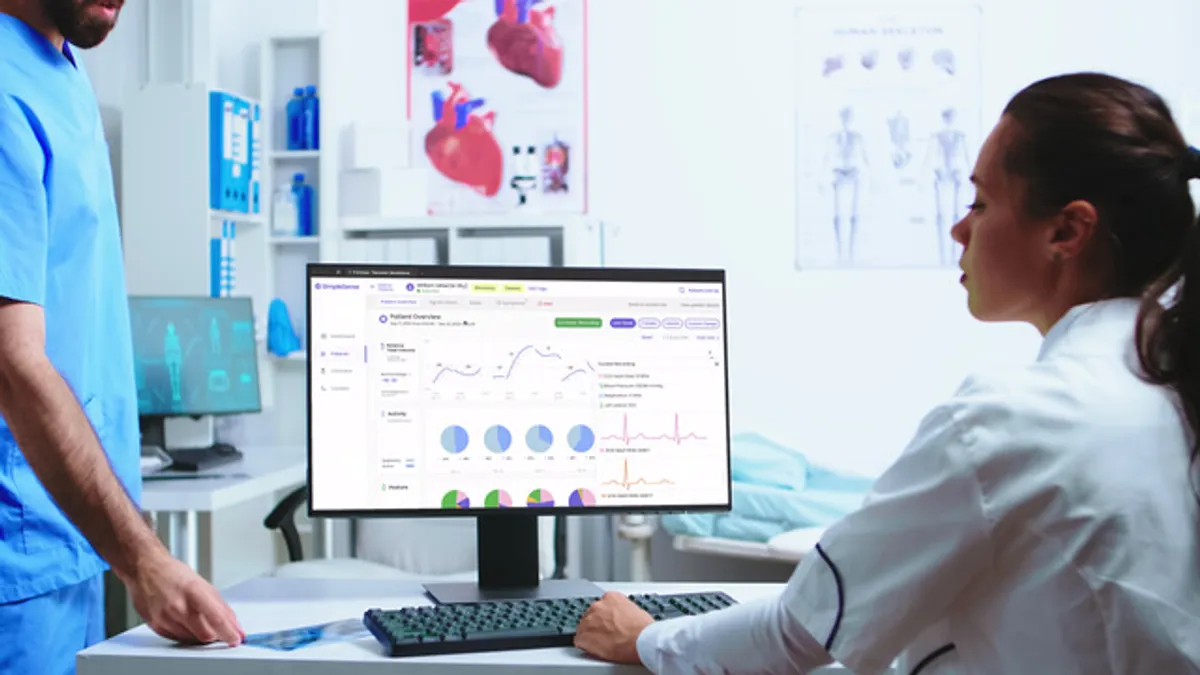Dive Brief:
- Nanowear has received 510(k) clearance for AI-enabled software that allows its wearable undergarment to estimate blood pressure.
- The Food and Drug Administration decision covers software that processes electrocardiogram (ECG) data, heart sounds and thoracic impedance captured by the Simplesense wearable device to monitor blood pressure at home, in healthcare facilities and during medical research.
- Nanowear is pitching the software as the “first non-invasive, cuffless, continuous blood pressure monitor, and diagnostic.” The company cited Biobeat Technologies’ wrist and chest monitor as a predicate blood pressure device in its 510(k) filing.
Dive Insight:
Simplesense is a cloth-based undergarment that wraps around the wearer’s torso and over one shoulder. The medical device features two ECG leads, plus sensors for recording heart sounds and activity, and for measuring respiration rate through thoracic impedance. Nanowear made the device to enable physicians and researchers to remotely capture data on patients without disrupting their lives.
Using the existing sensors, Nanowear has expanded the capabilities of the device. The updated product features software, Simplesense-BP, that estimates systolic and diastolic blood pressure. Clinicians need to take a traditional blood pressure measurement to determine a patient’s hypertension classification before using Simplesense, but after that can assess them remotely without using a cuff to capture data.
Nanowear validated the technology in four categories of hypertension, ranging from people with normal blood pressure up to individuals who were at risk for heart disease and stroke. The device’s accuracy met the International Organization for Standardization’s criteria in the four weeks after calibration, with no evidence of drift or divergence.
In a statement, Nanowear CEO Venk Varadan framed the software as an example of how its technology can understand “individualized risk signatures and cardiopulmonary care pathways of each patient.” The company is aiming to meet demand for a “reliable, clinical-grade wearable” and highlighted applications of the device in clinical research, where remote technologies can enable virtual and hybrid trial designs.










